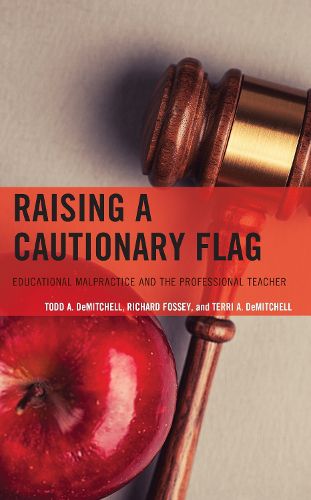Readings Newsletter
Become a Readings Member to make your shopping experience even easier.
Sign in or sign up for free!
You’re not far away from qualifying for FREE standard shipping within Australia
You’ve qualified for FREE standard shipping within Australia
The cart is loading…






Nearly 50 years ago a California court heard a complaint from a recent high school graduate who alleged that he could not read at a level that would allow him to apply for, let alone hold, a meaningful job. He asserted that the public school district was negligent and that his prospects for a productive life were diminished by their negligence. The court disagreed and educational malpractice was cast outside the schoolhouse gate and an educational malpractice wall was erected.
In sum, both federal and state courts have constructed a sturdy wall against the recognition of educational malpractice lawsuits. However, recent advances in research on instruction, statistical analyses that some have argued can identify substandard teaching, may have cracked the wall. Thus, confluence of events may lead to demolishing the educational malpractice wall constructed over the past half century.
The authors of Raising a Cautionary Flag: Educational Malpractice and the Professional Teacher, explore the judicial reticence to recognize educational malpractice as a viable tort of negligence. They review the concept of what constitutes a professional, what is malpractice and how is it related to the professional malpractice of physicians and attorneys, and the potential responses to education malpractice. They conclude by raising a cautionary flag about breaching the judicial wall.
$9.00 standard shipping within Australia
FREE standard shipping within Australia for orders over $100.00
Express & International shipping calculated at checkout
Stock availability can be subject to change without notice. We recommend calling the shop or contacting our online team to check availability of low stock items. Please see our Shopping Online page for more details.
Nearly 50 years ago a California court heard a complaint from a recent high school graduate who alleged that he could not read at a level that would allow him to apply for, let alone hold, a meaningful job. He asserted that the public school district was negligent and that his prospects for a productive life were diminished by their negligence. The court disagreed and educational malpractice was cast outside the schoolhouse gate and an educational malpractice wall was erected.
In sum, both federal and state courts have constructed a sturdy wall against the recognition of educational malpractice lawsuits. However, recent advances in research on instruction, statistical analyses that some have argued can identify substandard teaching, may have cracked the wall. Thus, confluence of events may lead to demolishing the educational malpractice wall constructed over the past half century.
The authors of Raising a Cautionary Flag: Educational Malpractice and the Professional Teacher, explore the judicial reticence to recognize educational malpractice as a viable tort of negligence. They review the concept of what constitutes a professional, what is malpractice and how is it related to the professional malpractice of physicians and attorneys, and the potential responses to education malpractice. They conclude by raising a cautionary flag about breaching the judicial wall.